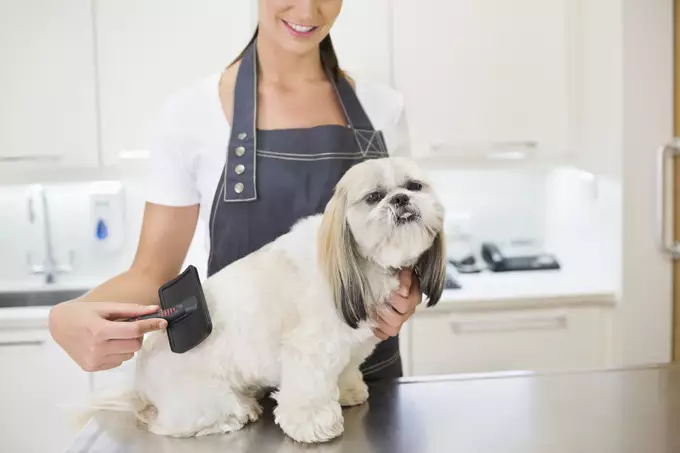Maintaining the well-being of our canine companions is crucial for their overall health and happiness, and grooming plays a significant role in that. While we may take for granted our ability to bathe, comb, and trim ourselves, dogs rely on their owners for similar care. This guide will delve into the importance of dog grooming, methods to carry out grooming at home, when to seek professional help, and the key factors to consider when selecting a grooming service.
Grooming is not just about aesthetics; it directly impacts the health of your dog. Regular brushing and bathing remove dead hair, dirt, and parasites like fleas, and they also provide an opportunity to observe your dog for any signs of health issues such as lumps, irritations, or skin infections. When you engage in grooming activities, you strengthen your bond with your dog while ensuring that they remain comfortable and clean. Particularly for long-haired breeds, regular grooming is essential to prevent painful mats and tangles that can lead to skin irritations.
Basic grooming tasks can easily be done at home, allowing you to maintain your dog’s hygiene between visits to a professional groomer. To get started, consider the following simple grooming methods:
1. **Brushing**: Use an appropriate brush for your dog’s coat type. This step is vital not just for shedding management but also for making your pet feel pampered and relaxed.
2. **Bathing**: Choose a gentle, dog-specific shampoo to avoid skin irritations. Regular baths help keep odor at bay and maintain a clean coat.
3. **Nail Trimming**: Regularly trim your dog’s nails to prevent discomfort or injury. If your dog is particularly anxious about nail trimming, consider using a professional groomer’s help to ease the transition.
4. **Ear and Teeth Care**: Cleaning your dog’s ears and brushing their teeth are also essential grooming tasks that should not be overlooked. Regularly checking these areas can prevent infections and promote overall health.
By introducing grooming as part of your dog’s routine early on, you can help reduce their anxiety and make them more tolerant of the process.
While some grooming tasks can be handled at home, certain situations warrant the expertise of a professional groomer. For instance, breeds with specialized cuts, like Poodles or Cocker Spaniels, may require specific grooming techniques to maintain their characteristic appearance. Similarly, dogs that are timid or anxious may benefit from the handling of experienced groomers well-versed in calming strategies.
In cases where dogs have encountered unpleasant messes (like rolling in something smelly or tangling in mud), or if they’ve developed mats that are beyond what home grooming can handle, seeking professional assistance is a wise choice. A trained groomer will be better equipped to handle these situations safely and effectively.
When selecting a groomer, it’s vital to conduct thorough research to ensure you find the best fit for your furry friend. Start by asking friends, family, and your veterinarian for recommendations. Look for groomers associated with reputable organizations, like the National Dog Groomers Association, which certifies grooming professionals.
Once you’ve gathered a list of potential groomers, visit their facilities to check for cleanliness and overall environment. Look for signs of a well-run establishment: are the staff friendly and attentive? Is the facility odor-free and well-lit? Proper ventilation and hygienic practices are essential for the safety and comfort of your dog.
Additionally, don’t hesitate to ask about their experience with your dog’s specific breed, pricing structures, and available services. Inquire if they can provide references from current clients, and consider calling the local Better Business Bureau to check for any complaints.
Before scheduling an appointment, there are steps you can take to ensure a smoother experience for both your dog and the groomer. Start by ensuring your dog is up to date on vaccinations, as many groomers will require proof. Familiarizing your dog with grooming tools and techniques at home can help reduce anxiety during professional grooming.
Make your dog comfortable with the environment by conducting training exercises that involve gentle brushing and massaging. If your dog’s anxiety is severe, working with a trainer or consulting your vet might be beneficial.
On the day of the grooming appointment, keep your goodbyes brief and upbeat. Long farewells can heighten your dog’s anxiety and create a negative experience for them.
Dog grooming is an essential aspect of pet care that promotes hygiene, health, and a strong bond between you and your canine companion. By understanding the grooming process, learning how to handle basic grooming tasks yourself, and knowing when to seek professional help, you’ll be well-equipped to keep your dog happy and healthy. With the right approach, grooming can become an enjoyable routine for both you and your pet.

